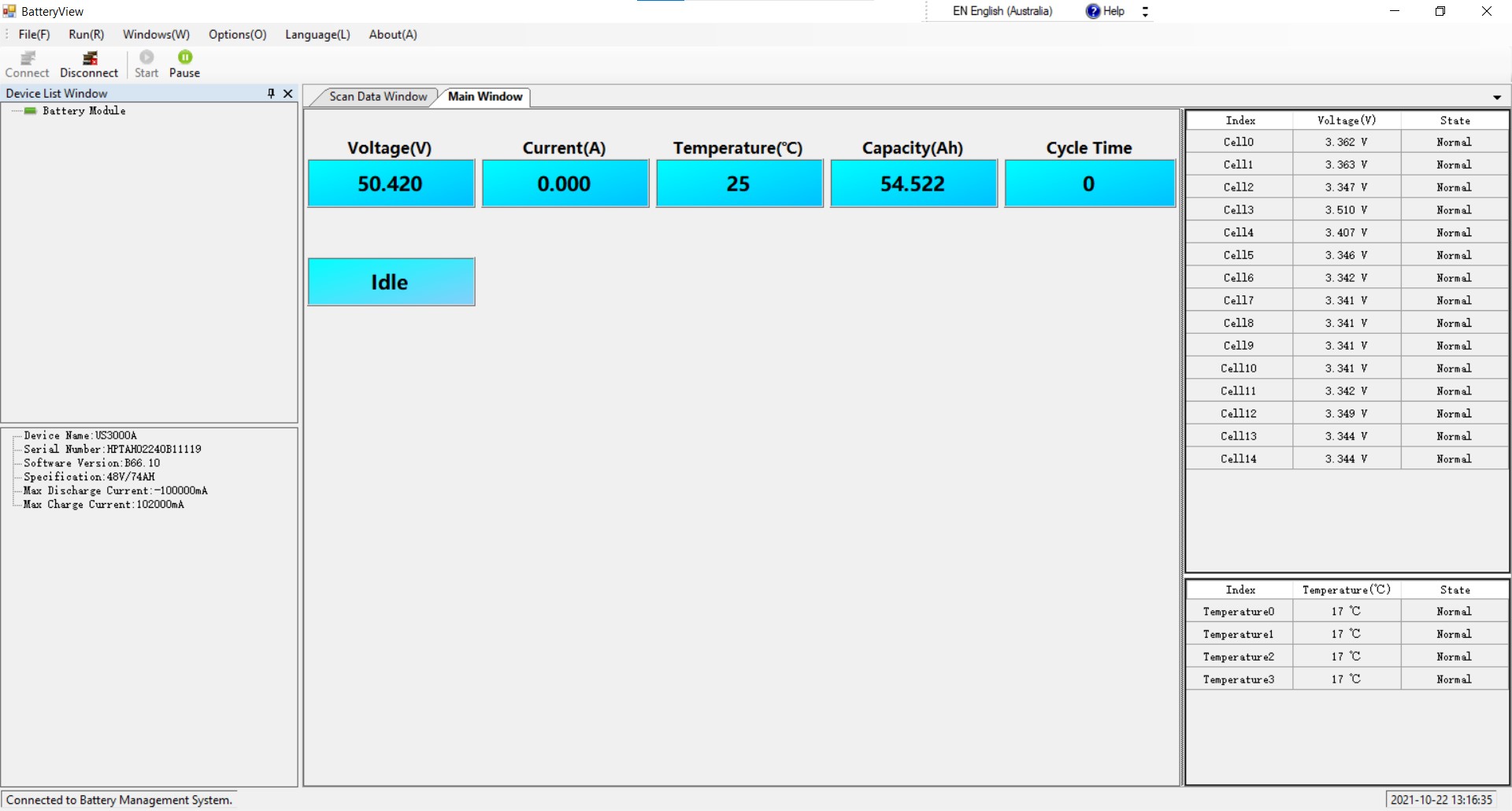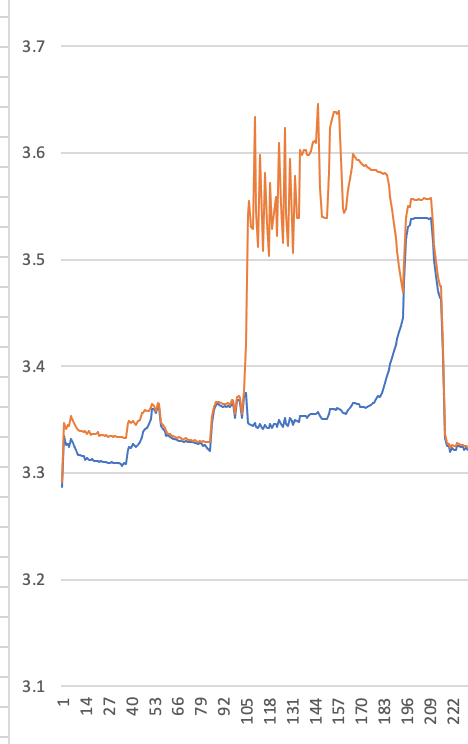Hello Victron friends
I am installing a third Pylontech US3000 battery to boost the storage capacity of my off-grid system, and am once again getting high voltage alarms. The battery arrived with SOC = 39% and I am charging it by itself using solar panels via the EasySolar II. The high voltage alarms started at 73% SOC & 50.6V and so I used the option in Remote Console DVCC settings to limit the charge voltage to the max possible without triggering alarms, ie 50.5V. I have included a screenshot from BatteryView.exe which shows what I presume is the problem: Cell 3 is at 3.51V, much higher than the others which are 3.3 - 3.4 V. The situation has changed little from yesterday to today, and I have some questions to ask of anyone who might know more about the internal cell balancing processes than I do.
- Is an external current input necessary to charge the low voltage cells, or do the cells redistribute charge among themselves? If they can redistribute internally, does it also happen when the battery is disconnected but switched on?
- I understand that cell balancing uses quite small currents. Am I going to have to wait for all of the other cells to catch up with cell 3? That would be a lot of amp hours and presumably will take a long time.
- Would the cell balancing be adversely affected if I connected the three batteries together? Running off three batteries rather than one would be more convenient as it would give me enough capacity to last through the nights and I wouldn't have to juggle the batteries.
Thanks!


